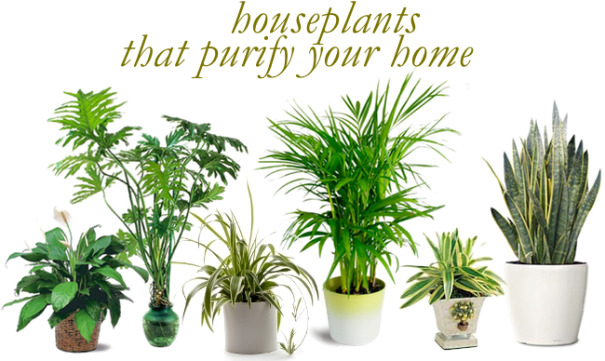Fight Indoor Air Pollution With House Plants
Shannon King, Charity Director
If you have been following along with my blogs you know that I love nature! When I was growing up I always said that when I had a house of my own that it would be like a jungle safari! Having house plants not only brings a living beauty to your home but provides a natural air-purification system for your indoor environment.
Have you ever noticed that stuffy smell / feeling inside your house? NASA calls this Sick Building Syndrome and is known to reduce productivity. Symptoms associated with short term exposure include headache, nausea, vomiting, swelling, coughing, irritation, confusion, heart problem, kidney problem and eye irritation. Indoor chemical pollutants can also lead to respiratory disorders, leukemia, liver disease and a myriad of cancers.
It’s nice to open the windows and air it all out, but sometimes weather doesn’t permit having the house open. Can house pants really do the trick? Studies by scientists at NASA, Pennsylvania State University, the University of Georgia, and other respected institutions suggest that they can. This is done during photosynthesis.
Photosynthesis is the process in which plants convert sunlight and carbon dioxide into energy. Plants absorb water through their roots, sunlight with their green pigmented chlorophyll, and carbon dioxide through tiny pores in the leaves called stomata. Carbon dioxide isn’t the only gas that plants can absorb. Scientists who study the air-purification capabilities of house plants found that they can also absorb several volatile organic compounds (VOCs) like
Ammonia: Found in window cleaners, floor waxes, smelling salts and fertilizers.
Benzene: Found in plastics, rubbers, nylon & synthetic fibers, drugs and pesticides.
Xylene: Found in printing, rubber, tobacco smoking, leather and paint.
Carbon Monoxide: Found in cooking stoves, water heaters, clothes dryers, fireplaces, charcoal grills, wood stoves, power generators, motor vehicle and cigarette smoke.
Trichloroethylene: Found in printing Inks, paints, varnishes and paint remover.
Formaldehyde: Found in paper bags, waxed papers, plywood paneling.
For a healthier home, you will need only 1-2 house plants per 100 sq. ft. Although most leafy plants will clean pollutants, the best plants for the job are the following:
Flamingo Lily – Anthurium andraeanum:
Toxins removed: Benzene, xylene & formaldehyde

Areca Palm – Dypsis lutescens:
Toxins removed: xylene, toluene, formaldehyde

Peace Lily – Sapthiphyllum ‘Mauna Loa’:
Toxins removed: ammonia, benzene, formaldehyde, trichloroethylene

English Ivy – Hendera helix:
Toxins removed: benzene, formaldehyde, trichloroethylene

Boston Fern – Nephrolepis exaltata:
Toxins removed: xylene, toluene, formaldehyde

Money Plant – Epipermnum aureum:
Toxins removed: benzene, xylene, formaldehyde
*Note – plant is toxic to dogs and cats

Snake Plant – Sansevieria:
Toxins removed: benzene, xylene, formaldehyde, trichloroethylene
*Note – plant is toxic to dogs and cats

Spider Plant – Chlorophytum Comsum:
Toxins removed: xylene, toluene, formaldehyde

Cornstalk dracaena – Dracaena fragrans:
Toxins removed: benzene, formaldehyde, trichloroethylene

Weeping fig – Ficus benjamina:
Toxins Removed – xylene, toluene, formaldehyde
*Note – plant is toxic to dogs and cats




